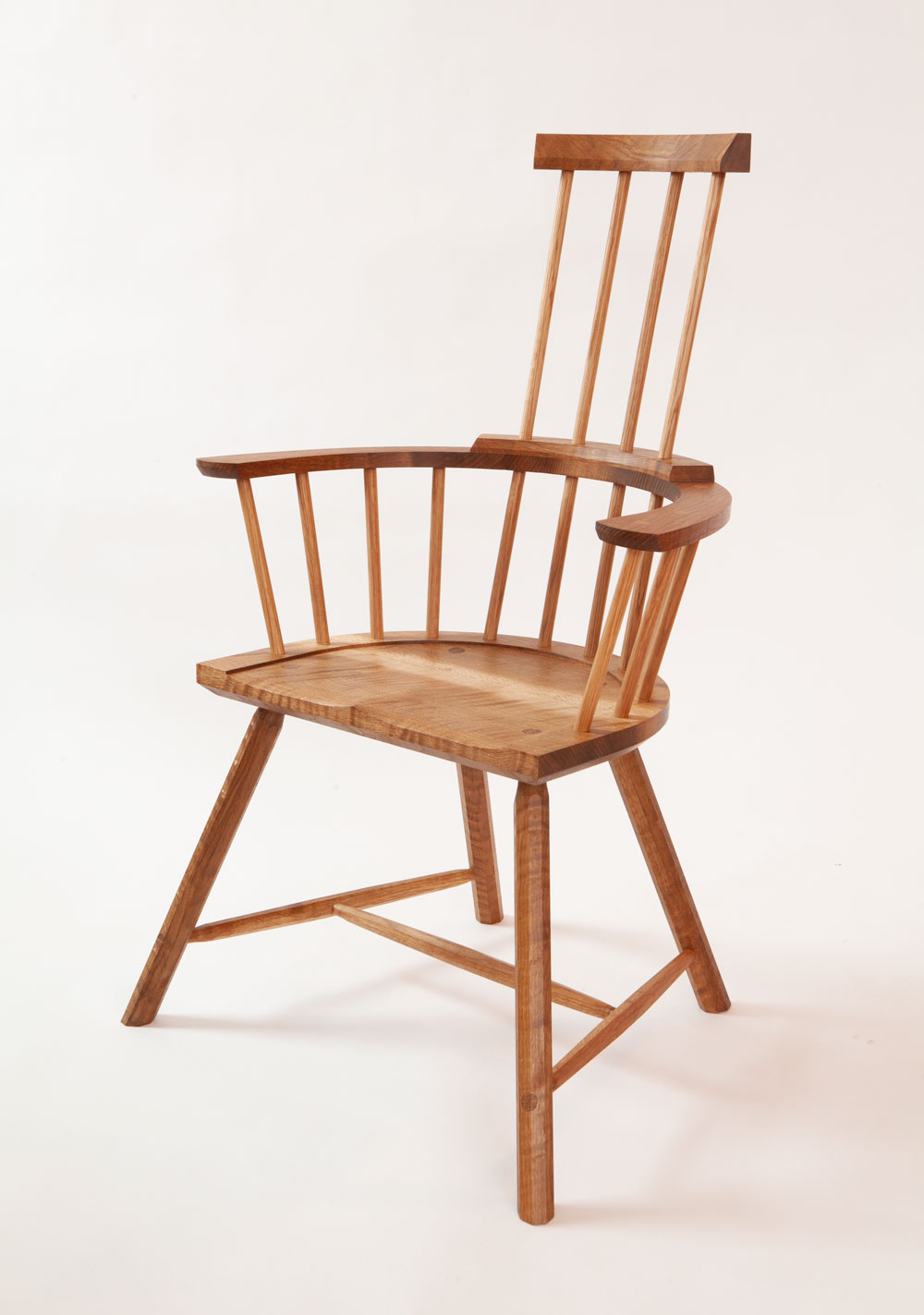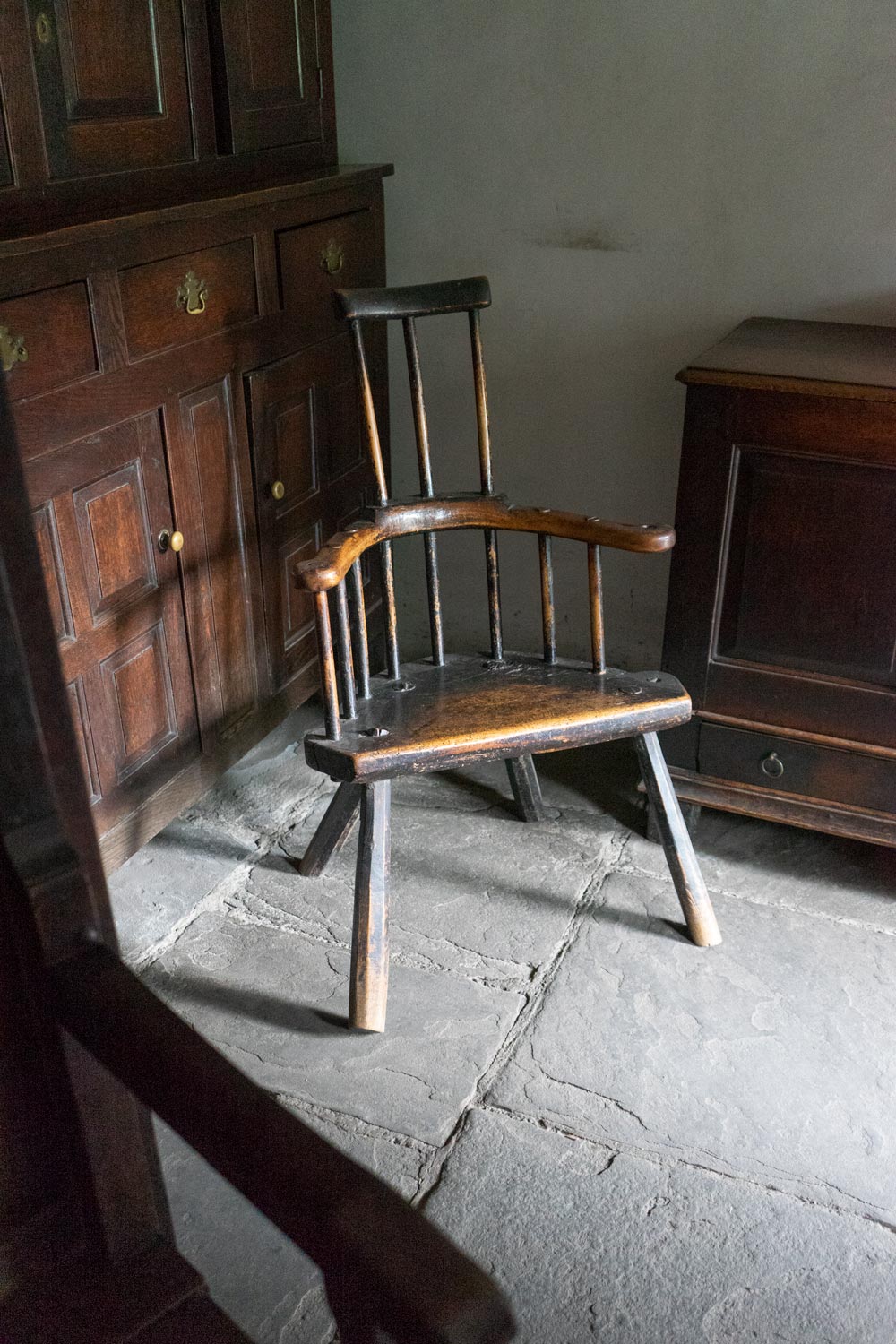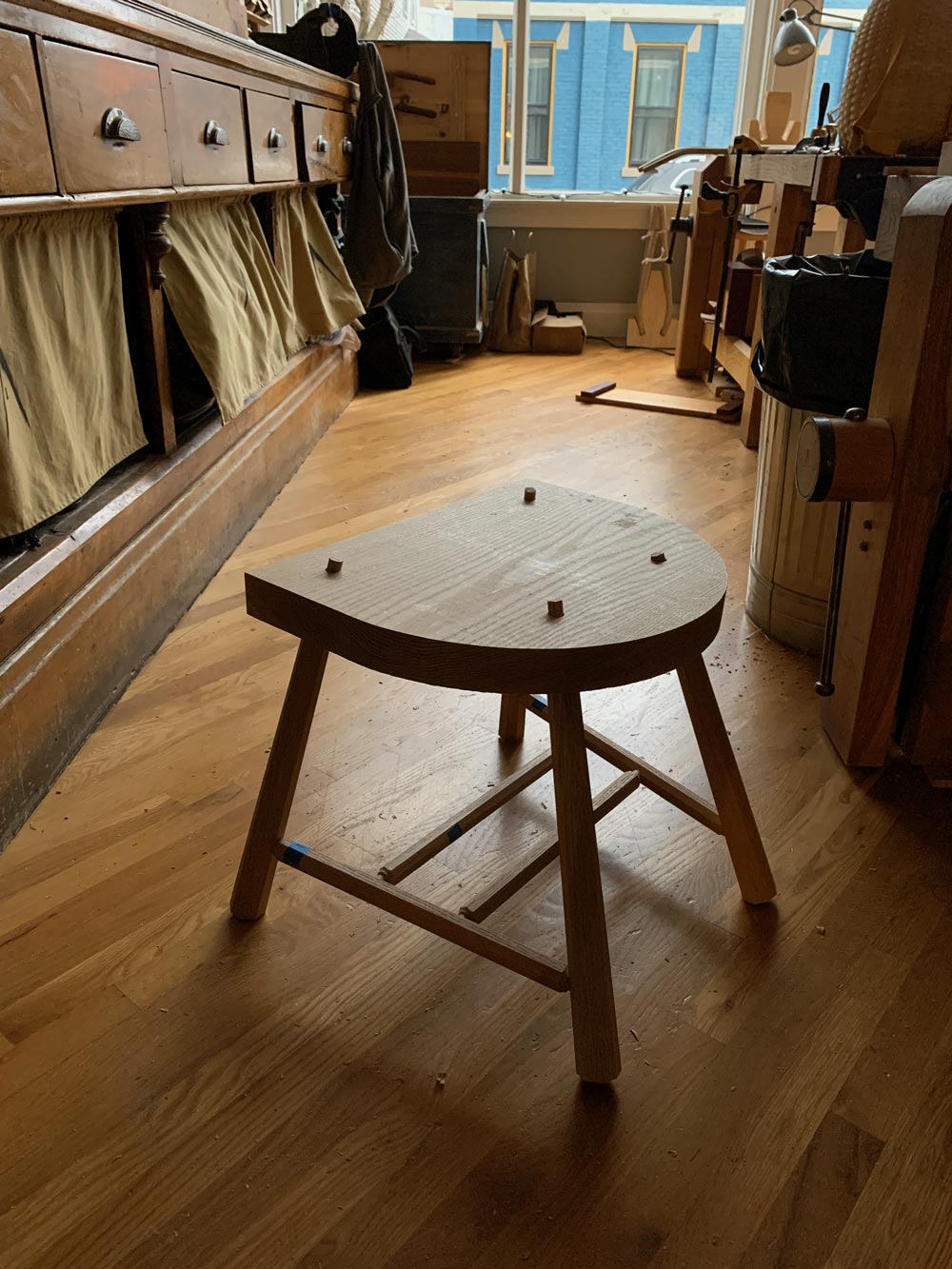This week we will begin selling laser-cut templates for the Staked Armchair in “The Anarchist’s Design Book: Expanded Edition,” and I have received more than a few raised eyebrows and cutting remarks about the templates.
After all, isn’t this a Welsh stick chair of the kind made famous by John Brown? The guy who said there never ever should be a plan published for a Welsh chair? And who also said that people who sell plans should go out of business?
First, this is absolutely (and you know it hurts me to write an -ly adverb) not a Welsh stick chair. As I’ve written time and again, I call this form an American Welsh stick chair because it is designed for modern American woods and with details that make it as contemporary as I can manage. The “Welsh” part of its name is a nod to its origins. If you want to build a real Welsh stick chair, go to St Fagans, soak up the fantastic vibe there and get to work. Or get a good dose of it through Chris Williams’s new book “Good Work: The Chairmaking Life of John Brown.”


But still, why am I offering plans and templates?
OK, close your eyes and imagine… Wait, that’s not going to work because you have to use your eyes to read the next sentence.
OK, let’s say it’s your first ever day in music class. You’re sitting in a chair with your foreign-feeling trombone, violin or (God save my ears) a plastic recorder. The teacher then says: OK class, I’d like you each to compose a sonata in G, and please don’t forget to return to the tonic key during the recapitulation. I’ll be back at the end of the class to grade your work.
Before you can write music, it’s helpful to be able to play music.
Music class is the opportunity to learn your instrument by playing beautiful pieces composed by others. When I taught myself to play guitar about age 11, I played “Froggy Went A-Courtin” so many damn times I thought my sisters might murder me. So then I sang “Michael Row the Boat Ashore” about 60 times to torture them anew.
After learning hundreds of folk songs, standards and country tunes, I could feel their patterns in my hands as I moved them across the fretboard. I felt how suspended chords could brighten a progression. I knew so many songs composed with G, D and D chords that I also knew how odd (and wonderful) it was to encounter an A7 in a bridge. I could also spot chords that really didn’t have a name, made by people who had never formally studied music. Those were my favorites.
After a few years of playing other people’s tunes, I began to write my own. But I still continued to play other people’s songs in an effort to get inside their heads and make myself a better musician and songwriter.

So (if you are still awake at this point) this is why I offer explicit plans for this chair. If you want to become a chairmaker, it helps to learn the processes, joinery and setups while building someone else’s design. Some people do this by taking a class. Other people can’t afford that route, so plans and templates are an effective way to learn.
It is my sincerest hope that after you build a bunch of chairs that you will see the patterns and rhythms built into my designs (and the chairs of others). The language in my chairs is as straightforward as 12-bar blues. It ain’t jazz. Then, perhaps, you will be able to build chairs of your own devising.
And then maybe someday, we’ll have a world where every chair is different.
— Christopher Schwarz
P.S. We are working out the pricing on the templates that were designed and made by FirstLightWorks. We’ll have full details on them and their availability in short order. So I don’t have any more information to share just yet. Apologies.


Fabulous news!
Oh say can you C? 😉
Beat me to it 🙂
Right on Chris. I was truly fortunate and lucky enough to have Bern Chandley come to teach a course about an hour and a half from my home. That knowledge windfall was exactly what I needed to get over the trepidation and fear factor of “chair making”. Bern was generous (like you) to allow us to trace the templates for the chair he and Pete Galbert taught us to build.
*Here’s the takeaway* Those templates have been a godsend as I explore variations on a theme, different modalities or open tunings so to speak in the armbow, spindle deck and stretchers. (sorry for the heavy handed metaphor) Having some woodworking sheet music helps me grow and explore.
~Peter
Maybe because I read this before first coffee, but the prose equaled the beauty of the chair and the inspiration of the templates. OK, talk after coffee
Beautifully explained. Bravo 👏
John Brown can seem a black and white character on the surface, but I find him more complex. For many years at the beginning of his chairmaking career, he planned on refining his designs and publishing plans. It was after a great deal of experience, he decided it was best not to. So he wasn’t always against them.
And he certainly had seat and arm templates to facilitate his craft. A template is not the same as a plan.
But really, anything that gets folks to make a chair is a big boost for chairmaking. That’s a wonderful thing.
Ahead of the curve. Pun intended.
So what you’re saying… Templates torment wieners, like singing torments sisters.
“Existing” torments wieners.
Hi Chris: It is a more than fantastic news since i know nothing about building a chair (for now i am just sitting on them…pure user). Will there be a video related to build it with the plans ? I do agree NO one has gone on a Path totally alone. We all need to learn to walk…
Good move on the templates. Anything that can help people building the piece instead of wasting time wondering how they are going to proceed, is I think a good thing.
I look at the nearly triangular form and narrowness of the St. Fagan example pictured above (recognizing just how varied Welsh stick chairs were) and wonder how it would feel to lean back in it. I am unwilling to assume that people a century or more ago were shaped that much differently than most of us today even though it is possible that we are on average both taller and heavier. I agree that your chair design is contemporary and worthy of the term American Stick Chair, and I find it more stylish and potentially more comfortable than many of the Welsh chairs I see in books. I am inclined to describe some of them as appearing awkward rather than ugly – but always interesting, in full realization that the builders’ goal was likely more utility than style or beauty.
I’m not a fan of ballet, but after watching my daughter perform in the Nutcracker every year for the last n years, I’ve come to appreciate it and recognize good and great dancers and performances.
I’ve been reading your (passionate) columns on chairs and viewing endless pictures of said chairs for a few years. Now that I’ve received my copy of ADB, I think I might have to try building one. Thanks.
There’s a lot of jazz been played over a12-bar blues… But I think you’re designs are more Jelly Roll Motion, than say, George Thorogood.
Musically you may be right. But until just now, I’ve never realized how much Jelly Roll and Thorogood’s stage personas were similar… self-aggrandizing over confident schtick, sticking with a music form rapidly going out of date but really making some great tunes.
There’s a lot of jazz been played over a12-bar blues… But I think you’re designs are more Jelly Roll Motion, than say, George Thorogood.
Making your first chair is daunting, and most of us don’t have someone watching us to point out the mistakes that we are about to make, so these templates from Chris are going to be much appreciated, and be a catalyst for developing one’s skills further: food for the journey. Bon appetit.
As Carl Sagan once said, “If you wish to make an apple pie from scratch, you must first invent the universe.”
If you hadn’t included plans & dimensions in the expanded ADB would probably still be dreaming about an armchair I could make instead of sitting in one. These templates are a great service, thank you.
Nice article! Thanks for sharing. Very helpful to me.